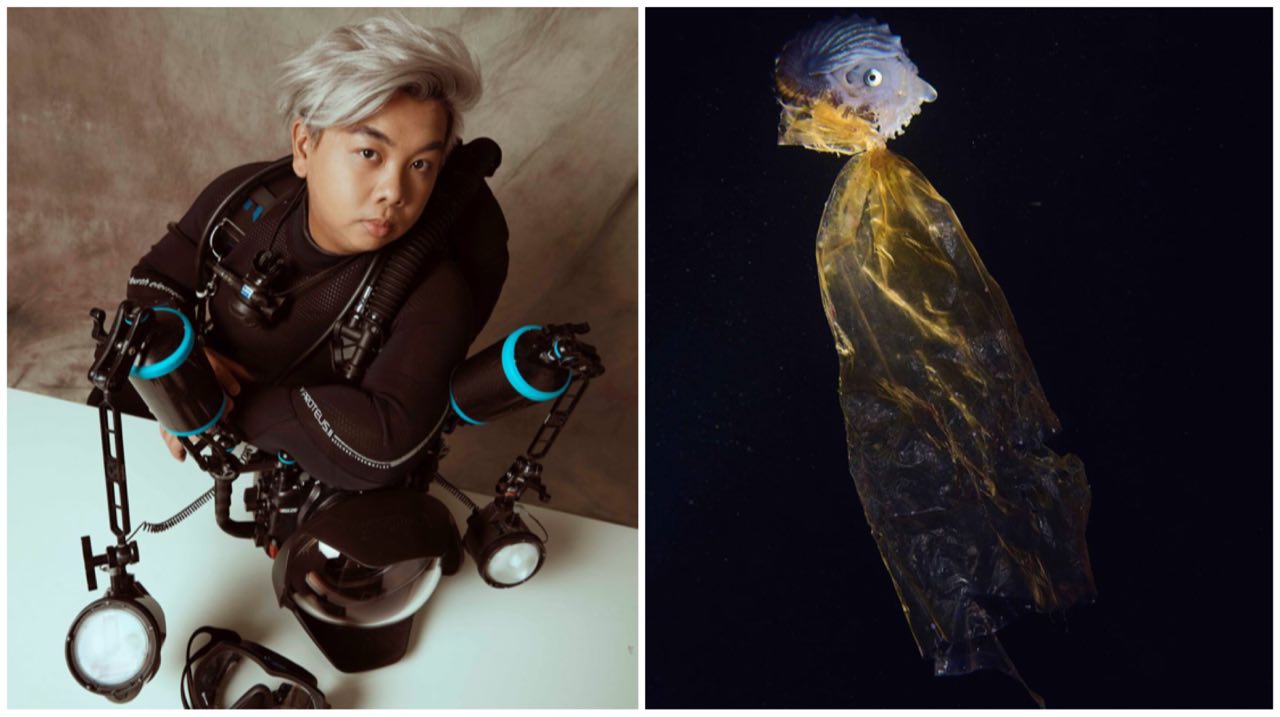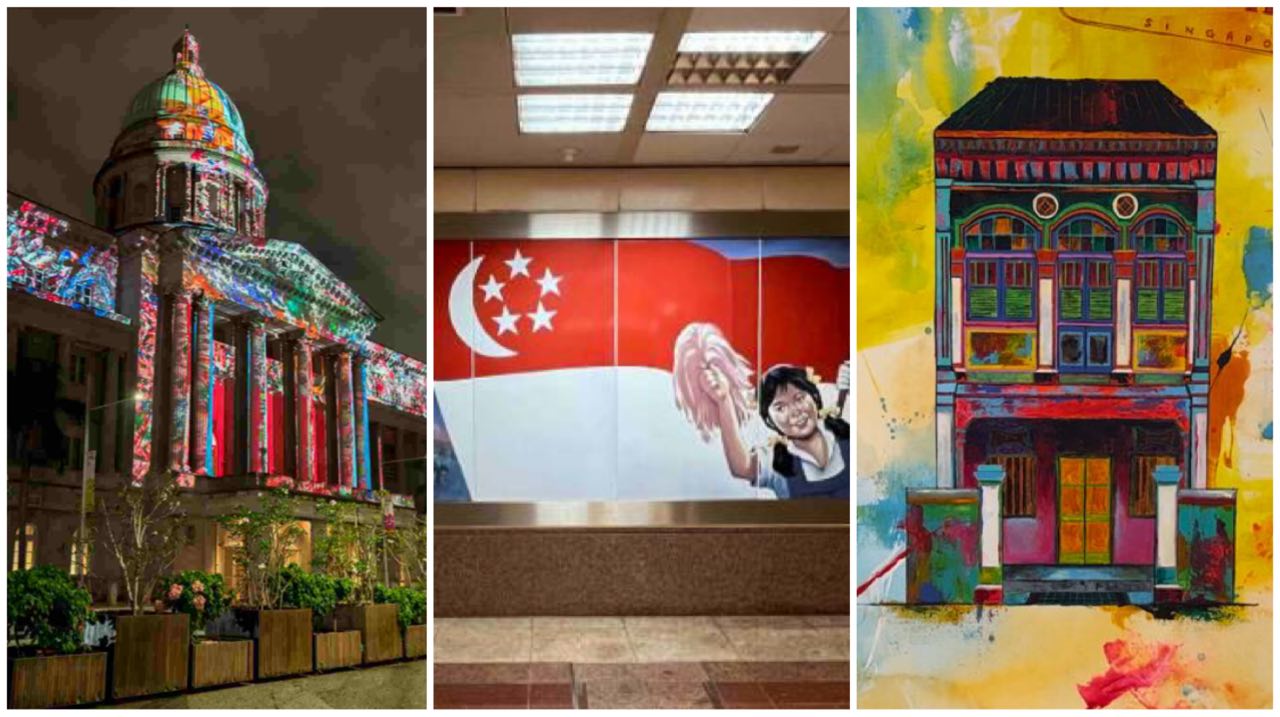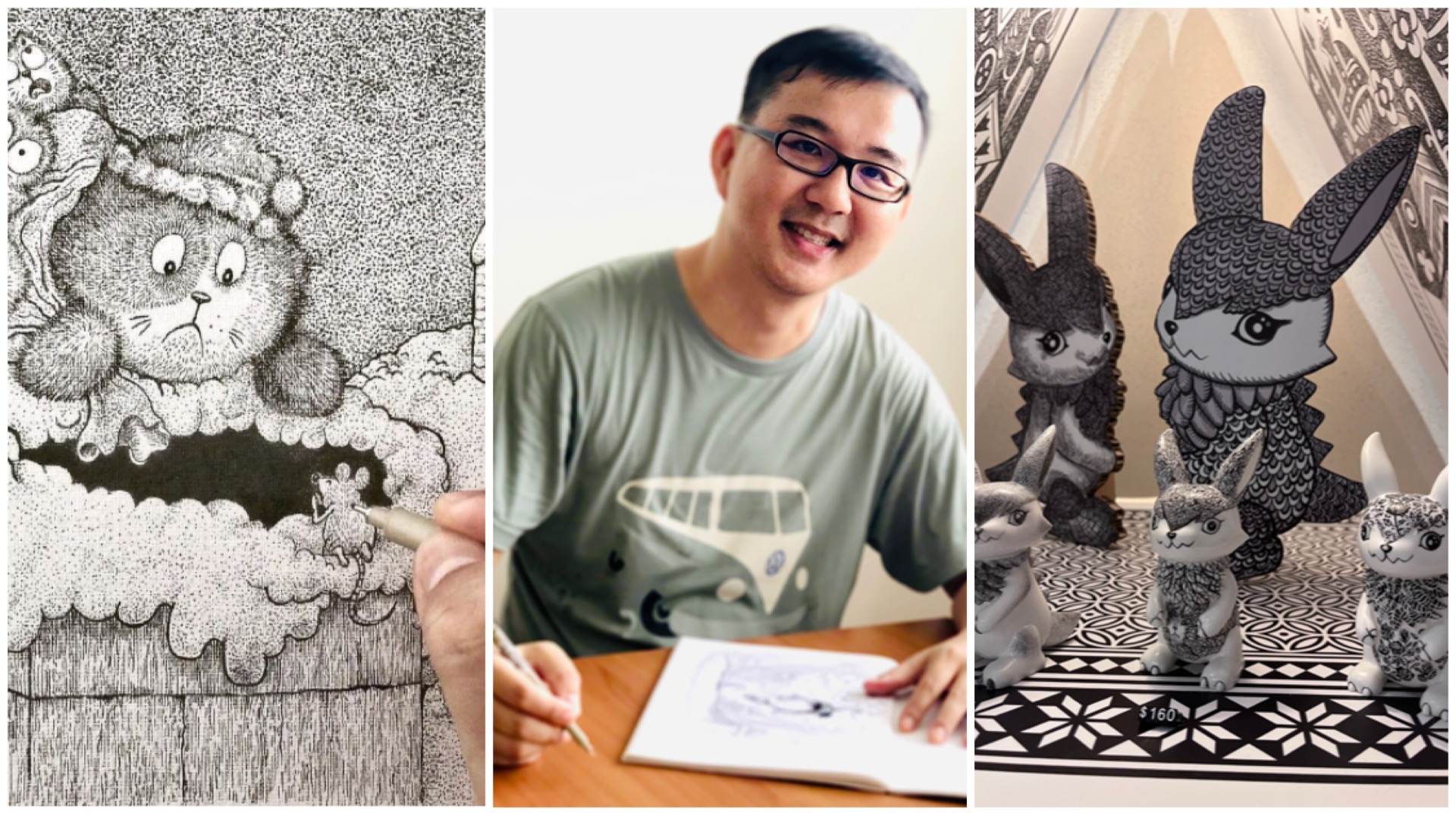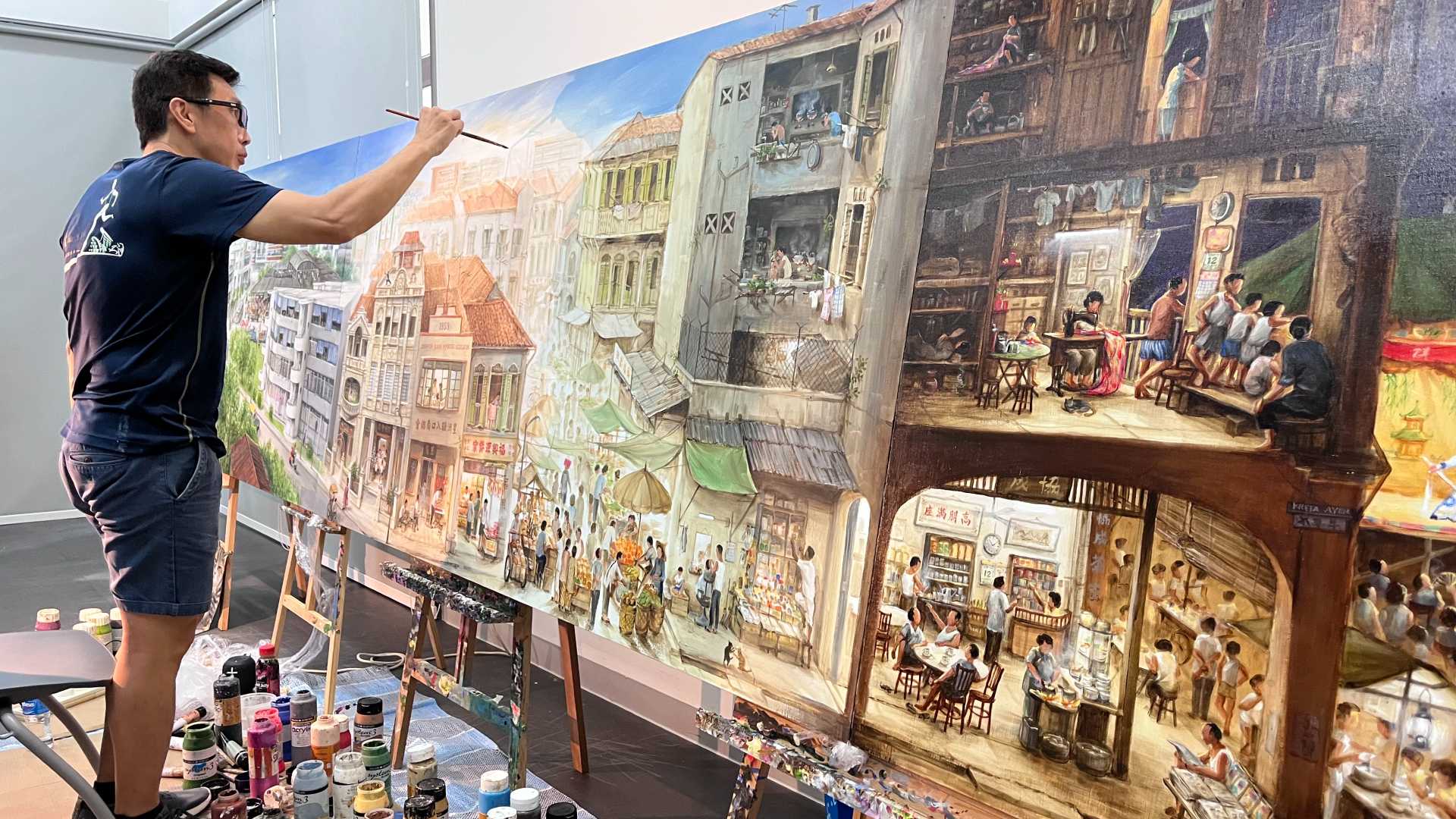Artist Behind The Art: From Near-Death Experience To Nature Photographer Of The Year
In November last year, Toh Xing Jie became the first Singaporean and the youngest photographer to snag the top prize in the Human & Nature Category at the Nature Photographer of the Year Award (NPOTY) 2023, for his epic underwater shot of a lone nautilus clinging on to a plastic bag.
What’s more surprising: Xing Jie is a survivor of a near-death sub-aquatic experience. In 2017, his breathing apparatus failed when he was 38m underwater. This affected his confidence, and he took a four-year hiatus from the ocean before finding the courage to dive back in (literally).
What prompted him to do so?
"Honestly, I just wanted to shoot my personal project underwater. It was simply impossible to not be in the water. I had to suck it up and do what had to be done," says Xing Jie. "I re-did my training in a stricter manner, and understood the importance of drills underwater.”
By taking baby steps and with encouragement from peers, Xing Jie went back in the water. "I do have the phobia at the back of my mind," Xing Jie admits.
"However, I’ve learned to trust the training, and trust my team to have my back.”
Stepping out of his comfort zone wasn't just a bold move, it was a game-changer. Xing Jie bagged the prestigious ADEX Photo of the Year not just once, but two years in a row, in 2022 and 2023. Not only is he the first Singaporean to win the prize, and the youngest photographer to do so, he's the first person to ever claim the crown in back-to-back years. The 29-year-old was also a Forbes 30 Under 30 Asia honoree in the Media, Marketing & Advertising category.
And to think this all began when he was inspired by an online photography exhibition, "Shepherds of the Sea" by Benjamin Von Wong, years back. We catch up with Xing Jie and get a snapshot of his wild journey, from snapping pics at concerts to hosting a podcast about diving in our neck of the woods - or rather, waters.
Congratulations on your spectacular winning NPOTY photo, “The Sad Poncho”! Tell us about this magical moment, and how you prepare for underwater photo shoots.
On that dive, I got separated accidentally from my dive buddy, so I was looking out further than I usually do. In pure darkness, we usually slash our torches rapidly to see if anything reflects from a distance. My torch [illuminated] the yellow plastic packaging that the Nautilus was hanging on to, which led me to approach it cautiously.
I think I owe it to my experience on land to know the settings I need to use like the back of my hand. Being a studio photographer diving at night is advantageous, I am trained to see light, and I can make an educated guess as to how the photo will turn out.
Also, I ensure that I familiarise myself with the positions of all the buttons on my underwater casing. Because of the way the casings are built, buttons usually end up in different locations and, most of the time, are not as accessible as they are on land. Therefore, it’s important to practice, practice, practice!
Was there a significant moment in your early years of photography that played a crucial role in your personal development?
When I first started out, I was fortunate, and had opportunities to shoot concerts at Singapore Sports Hub. This really tested my skills. Usually for concerts, we are only allowed to shoot the first three songs. Concert lighting is unique to each band, so we went in almost blind. Furthermore, we could only guess how the band members would react as Singapore back then was usually their first stop of their tour, so we had no reference. We had little time to react and to nail the shot.
I was thrown into a highly stressful environment and had to perform. The two events I can never forget: the first was Jay Chou’s Invincible Tour; I had to shoot, offload photos for press (print), and come back to shoot the concert without missing the KPIs. The second was U2’s The Joshua Tree concert; the shooting area was nowhere near the place we were briefed on, but luckily, I came prepared and delivered.
From there, I moved on to advertising and commercial photography, which had its own set of challenges. But the lessons learned from shooting events and concerts set a good foundation for me as a photographer.
Congratulations also on winning the Asia Dive Expo (ADEX) Photo of the Year for two consecutive years (in 2022 and 2023)! How has your underwater photography and technique evolved, and what do you believe sets your work apart?
When I first started underwater photography, it was about grinding the fundamentals - understanding how light behaves underwater, how creatures react, and, most importantly, how water affects your photos. Nowadays, it’s a bit more experimental. Brainstorming different methods that [will make] people question how it is done.
I believe what sets my photos apart is that I capture the images [only with] the camera. I don't use Photoshop to manipulate my images. I was trained to shoot in a way that achieves the desired effect, without relying too much on the computer to produce the results.
We came across a photograph you took for the Army Photo Challenge in 2019 which bagged top prize in the “Our Arsenal In Action” category. Did national service inspire you or your pursuits in any way?
Yes, I feel blessed that during my NS, I had the opportunity to continue shooting and leading the Guards CKF Media Team. Being part of such a large organisation gave me a new perspective on the big picture, and how marketing and photography contribute. In this case, it was a way to motivate and keep the team tightly knit.
One project that I still think about today is the creation of posters and videos for the dragon boat regatta event. We aimed to inspire people to train harder for this inter-formation competition, and our efforts resulted in the best result in years.
Tell us about Ugly Diving, a platform offering underwater photography workshops, freediving courses, and underwater portrait photography. What prompted you to launch it?
Photography has been a wild ride for me and a big part of my life. In 2015, I started diving and discovered something that brought me as much joy as photography does. My heart has always been torn between these two passions, and I've spent a considerable amount of time contemplating how I should combine them instead of sacrificing one for the other.
This is my answer. By expanding my portfolio to include underwater photography and teaming up with the industry's best, we can provide a safe and conducive way to learn and create together.
You also run The Ugly Diving Podcast. How did that come about?
The idea behind running The Ugly Diving Podcast was simply to encourage people to discuss diving in Asia. There is a lot of information available online, but it often caters to the western hemisphere, where diving is vastly different.
Our goal was to invite prominent figures in diving, beginning in Singapore, and hopefully expanding across the region. The podcast aims to share stories, moments of why we fell in love with the sport, and to delve into the minds of experts, and learning a thing or two along the way.
Despite a busy schedule, you're committed to giving back to the diving community through volunteering. Can you share a memorable experience from your volunteering efforts, and the impact you hope to make?
There was a dive where I volunteered to help get rid of crown-of-thorns starfishes in the Philippines. They are venomous marine invertebrates known for their destructive impact on coral reefs. During population outbreaks, they feed on coral polyps by releasing digestive enzymes, leading to significant coral reef degradation.
These outbreaks, made worse by factors like nutrient run-off and the decline of natural predators, pose a serious threat to the delicate balance of coral ecosystems. By eradicating them off the reefs, we can ensure the health and safety of the reef, and protect marine biodiversity.
You also play underwater rugby! Tell us more, and how it contributes to your creative process.
It is something I wish I could do more of! The community here in Singapore is amazing. People are super encouraging, and come from all walks of life. Underwater rugby is a unique and exhilarating sport that borrows elements from rugby, soccer, and water polo, bringing them into an underwater setting.
I love how the game is so three-dimensional. You not only have to look out from your lateral plane but also vertically. It is highly challenging as you make lots of movements while playing without breathing equipment. It enhances creativity because, in high-stress situations, you are still able to think properly, and, most likely, make the right decision.
For the latest updates on Wonderwall.sg, be sure to follow us on TikTok, Telegram, Instagram, and Facebook. If you have a story idea for us, email us at [email protected].










